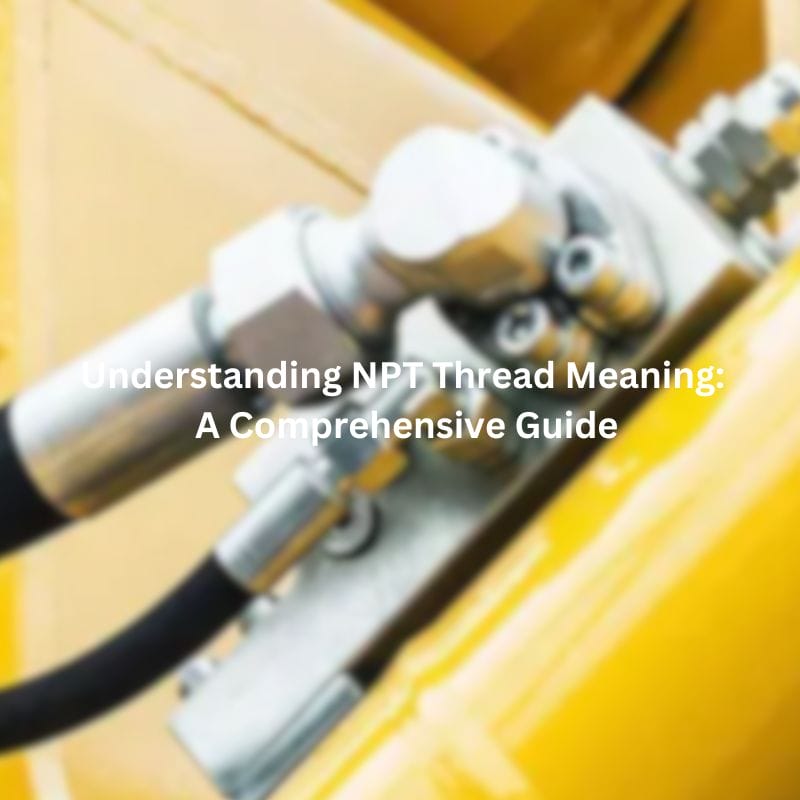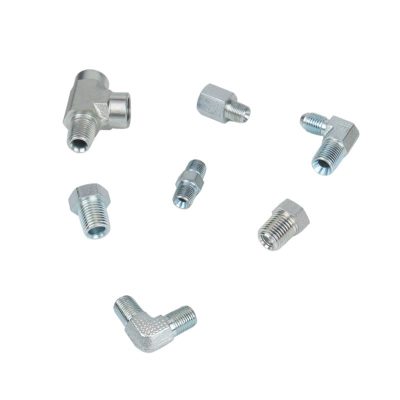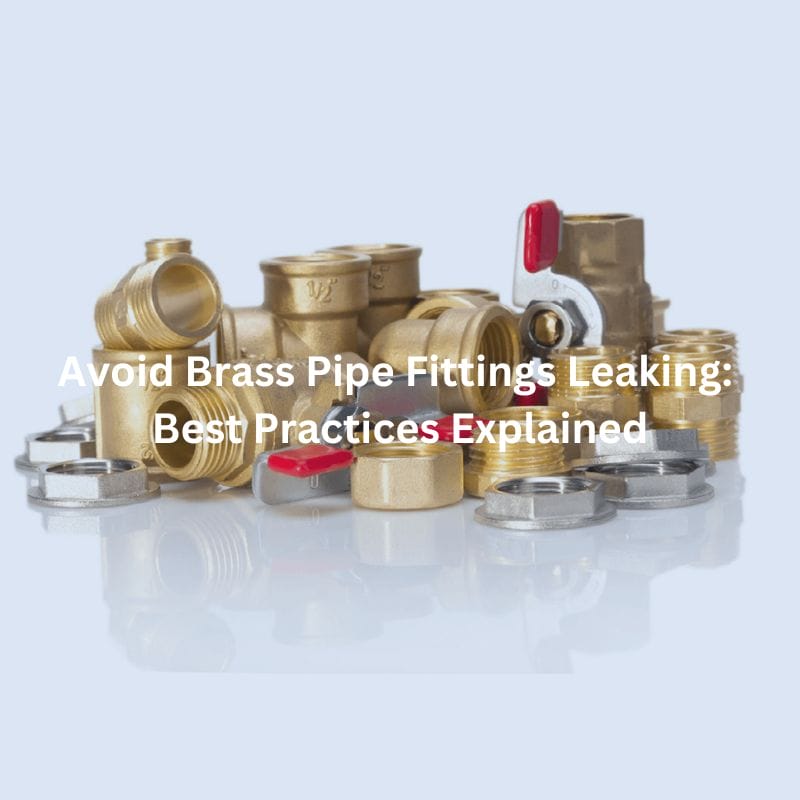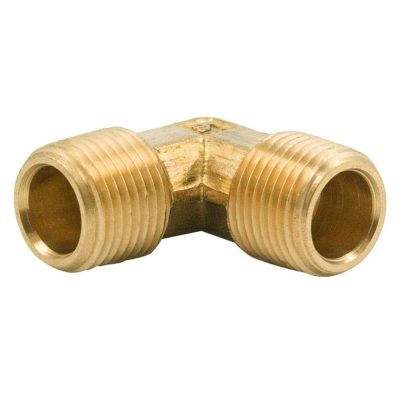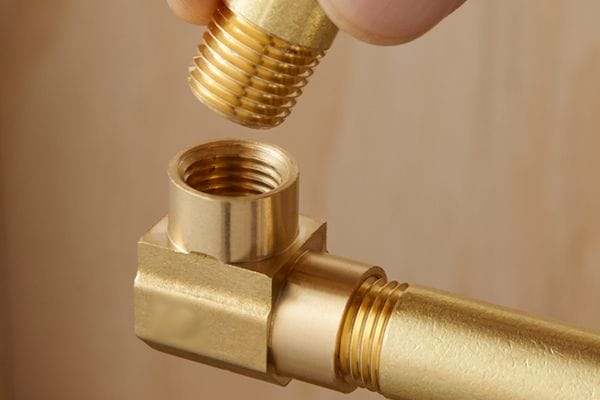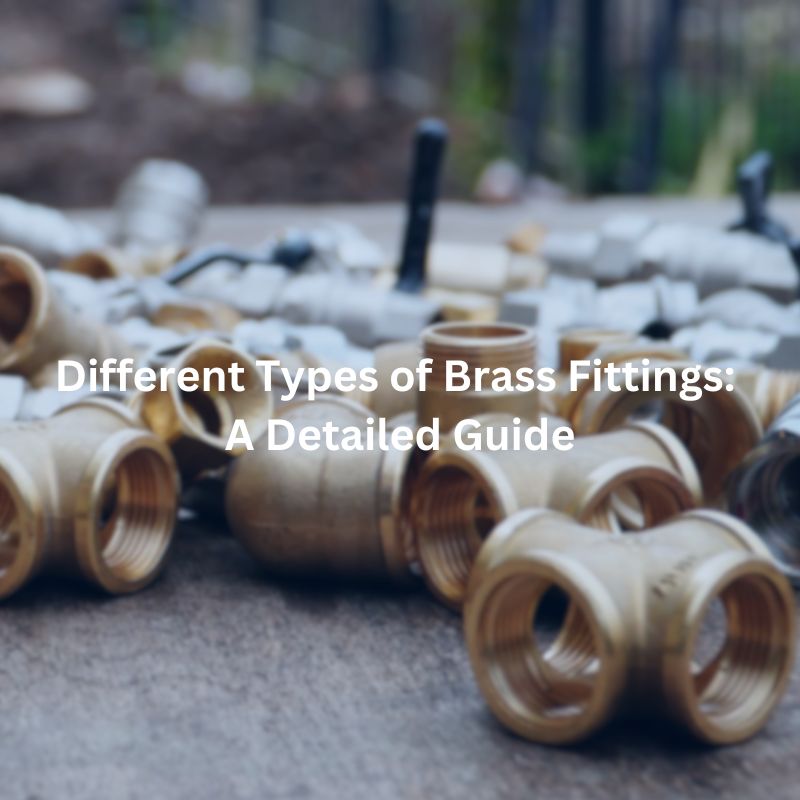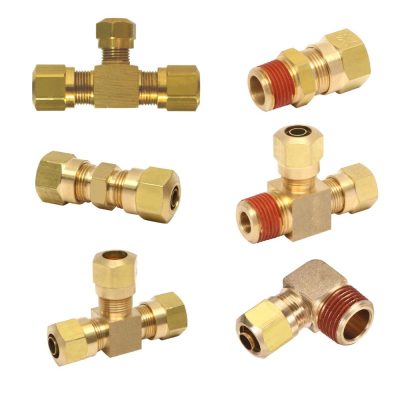Understanding NPT Thread Meaning: A Comprehensive Guide
Table of Contents
Introduction
Threads play a crucial role in industrial applications, providing secure and leak-proof connections in various systems. Among the different types of threads, the National Pipe Thread (NPT) stands out due to its widespread use and reliability. This comprehensive guide aims to offer an in-depth understanding of NPT threads, from their design and specifications to their applications and best practices for installation and maintenance.
What is NPT Thread?
NPT, or National Pipe Thread, is a U.S. standard for tapered threads commonly used on threaded pipes and fittings. Recognized for its effectiveness in creating secure and leak-proof connections, NPT threads play a vital role in various industrial applications, from plumbing and gas lines to hydraulic systems and beyond.
Historical Background
The development of NPT threads dates back to the early 20th century. As industrialization progressed, the need for standardized and reliable pipe connections became increasingly apparent. Before the establishment of NPT standards, there was significant variation in thread types, leading to compatibility issues and frequent leaks. The introduction of NPT threads provided a uniform solution, streamlining manufacturing processes and improving the safety and reliability of piping systems.
Design Principles
The defining characteristic of NPT threads is their tapered design. Unlike straight threads, which maintain a consistent diameter along their length, NPT threads gradually decrease in diameter from the end of the pipe toward the fitting. This taper is specified at an angle of approximately 1° 47′. The taper allows the threads to engage more deeply as they are screwed together, creating an increasingly tight seal. This self-sealing property is crucial for preventing leaks, particularly in high-pressure and high-temperature applications.
Seal Mechanism
The sealing mechanism of NPT threads is primarily mechanical. As the male and female threads are tightened, the taper forces the thread crests and roots into closer contact. This close fit restricts the path for fluid or gas to escape, effectively sealing the connection. The reliability of this seal can be further enhanced by using thread sealants or tapes, which fill in any microscopic gaps between the threads and add an extra layer of protection against leaks.
Variations of NPT Threads
While NPT is the standard, there are several variations designed for specific applications:
NPTF (National Pipe Taper Fuel): These threads are designed for applications involving fuel and hydraulic systems, where a dry seal (without sealant) is often required. NPTF threads have a modified thread form that provides an even tighter seal.
NPTR (National Pipe Taper Railing): Used in railing and guardrail systems, these threads ensure secure mechanical connections.
NPS (National Pipe Straight): Unlike tapered threads, NPS threads are straight and used in applications where the seal is made with an O-ring or gasket, rather than by the threads themselves.
Applications of NPT Threads
NPT threads are ubiquitous in various industries due to their robustness and ease of use. Some common applications include:
Oil and Gas: NPT threads are extensively used in pipelines and refineries, where their ability to provide leak-proof connections is critical.
Plumbing: In both residential and commercial plumbing systems, NPT threads ensure secure connections for water supply and waste removal.
Hydraulic Systems: The high-pressure environments of hydraulic systems rely on the dependable seal provided by NPT threads.
Fire Protection: Fire sprinkler systems use NPT threads to ensure that water can be reliably delivered in case of an emergency.
Understanding Thread Terminology
NPT threads are characterized by their tapered design, which is critical for creating a tight seal. The taper causes the threads to become progressively tighter as they are screwed together, enhancing the seal and preventing leaks. The threads are cut into both male and female components, with the male thread being the external thread and the female thread being the internal thread.
Threads Per Inch (TPI)
TPI refers to the number of thread peaks per inch of length. This measurement is crucial for determining the thread’s fineness or coarseness. A higher TPI indicates finer threads, while a lower TPI signifies coarser threads. In NPT threads, TPI helps ensure that the threads fit correctly and securely.
Pitch
The pitch of a thread is the distance between corresponding points on adjacent threads. It is typically measured in millimeters for metric threads or as a reciprocal of TPI for imperial threads. Pitch is vital for ensuring that threads align properly when engaged.
Flank
The flank is the surface between the crest and root of a thread. It plays a crucial role in the strength and load distribution of the thread. Properly designed flanks ensure that the threads can handle the stresses and loads they are subjected to without failing.
Crest
The crest is the top surface of the thread. It is the highest point on the thread profile. The crests of NPT threads, when engaged, make initial contact and begin the sealing process as the threads are tightened.
Root
The root is the bottom surface of the thread. It is the lowest point in the thread profile, opposite the crest. The root’s shape and smoothness are critical for preventing stress concentrations that could lead to thread failure.

Tolerance and Fit
Tolerance and fit are critical aspects of NPT thread design. These parameters ensure that threads manufactured by different producers are compatible and can be used interchangeably. Tolerance refers to the permissible variation in thread dimensions, while fit describes how tightly the male and female threads engage with each other. The American National Standards Institute (ANSI) and the American Society of Mechanical Engineers (ASME) provide detailed specifications for NPT threads under the ANSI/ASME B1.20.1 standard.
The standard specifies:
Thread Angle: 60 degrees
Pitch Diameter: The average diameter where the thread thickness equals the space between the threads
Minor and Major Diameters: The smallest and largest diameters of the thread, respectively
How NPT Threads Create a Seal
The sealing mechanism of NPT threads relies on the mechanical deformation of the threads as they are tightened. The taper angle plays a crucial role in this process:
Initial Engagement: When the male and female threads are first engaged, only the crests of the threads make contact. As tightening continues, the threads deform slightly due to the tapered design.
Intermediate Stage: As the threads are tightened further, the crests and roots come into closer contact, reducing the space between the threads. This contact creates friction, which helps to prevent the threads from loosening.
Final Stage: In the final stage of tightening, the taper causes the threads to wedge together more tightly. This wedging action creates a mechanical seal that prevents fluid or gas from leaking through the threaded connection. The deformation of the threads fills any gaps, ensuring a tight and leak-proof seal.
Measuring and Identifying NPT Threads
Accurate measurement and identification of NPT threads are crucial to ensuring a proper fit and optimal function in piping systems. Utilizing the correct tools and techniques allows for the precise verification of thread specifications, which is essential for maintaining the integrity and reliability of threaded connections.
Tools Commonly Used
Thread Gauges:
Function: Thread gauges are precision instruments designed to measure the thread pitch and taper. They come in various types, such as plug gauges for internal threads and ring gauges for external threads.
Usage: To use a thread gauge, insert the gauge into the thread or over the threaded area and check for a match. The gauge should fit snugly without excessive force. This process helps confirm that the thread pitch and taper conform to NPT standards.
Calipers:
Function: Calipers, including digital and vernier types, are versatile measuring tools used to measure the diameter and length of threads accurately. They can measure both the internal and external dimensions of the threads.
Usage: Place the caliper jaws on the thread and adjust until they touch the crests of the threads. For internal measurements, insert the caliper jaws into the female thread. For external measurements, place the jaws around the male thread. Calipers can measure major, minor, and pitch diameters, as well as the thread length.
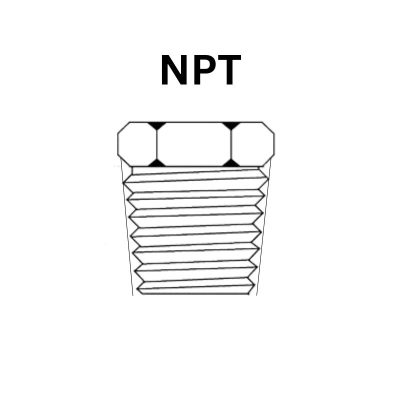
Identifying NPT Threads
The process of identifying NPT threads involves several steps to ensure that the threads match the required specifications. Here’s a detailed guide on how to accurately identify NPT threads:
Visual Inspection:
Initial Check: Begin with a visual inspection to identify the basic characteristics of the thread. Look for the tapered design, which is a key feature of NPT threads. This initial check helps distinguish NPT threads from straight or other thread types.
Using Thread Gauges:
Match the Thread Profile: Select the appropriate thread gauge for the suspected NPT size. Insert the plug gauge into the female thread or place the ring gauge over the male thread. Ensure the gauge fits snugly and check for a match in pitch and taper. A proper fit without gaps or excessive force indicates that the thread profile conforms to NPT standards.
Measuring with Calipers:
Diameter Measurement: Use calipers to measure the major and minor diameters of the threads. For external threads, measure the major diameter by placing the caliper jaws around the crests. For internal threads, measure the minor diameter by inserting the caliper jaws into the root of the thread. Ensure that the measured diameters fall within the specified tolerances for NPT threads.
Pitch Diameter: Measure the pitch diameter using the calipers. This is the diameter where the thread thickness equals the space between the threads. Accurate pitch diameter measurement ensures proper fit and function.
Thread Length: Measure the length of the threaded section using the calipers. This helps confirm that the thread length meets the required specifications for the application.
Checking Taper:
Measure the Taper: To verify the taper, use a caliper to measure the diameter at two different points along the thread length. The difference in diameter divided by the distance between the measurement points should match the taper angle of 1° 47′. This ensures that the thread taper conforms to NPT standards.
Troubleshooting and Maintenance
Despite the inherent reliability and effectiveness of NPT threaded connections, various issues can arise that compromise their performance. Understanding these potential problems and implementing regular inspection and maintenance practices can help ensure the longevity and functionality of NPT threads.
Leaks
Cause: Leaks in NPT threaded connections are often the result of improper installation, damaged threads, or inadequate use of thread sealant. Over-tightening or under-tightening the threads can also lead to leaks.
Prevention:
Ensure threads are clean and free from debris before assembly.
Apply an appropriate thread sealant or Teflon tape to fill any gaps.
Tighten the threads according to manufacturer specifications, avoiding excessive force.
Inspect threads for damage before use, and replace any components with visible wear or deformation.
Cross-Threading
Cause: Cross-threading occurs when the threads of the male and female components are not properly aligned during assembly. This misalignment can damage the threads and compromise the seal.
Prevention:
Start threading by hand to ensure proper alignment before using tools.
Avoid forcing the threads if resistance is encountered; back off and realign.
Use thread guides or alignment tools if available to assist with proper engagement.
Galling
Cause: Galling is a condition where metal surfaces weld together under pressure, causing the threads to seize and potentially strip or break. This is more common with stainless steel and other high-strength materials.
Prevention:
Apply lubricants or anti-seize compounds to reduce friction during assembly.
Use proper installation techniques, avoiding over-tightening.
Consider using materials or coatings less prone to galling for high-stress applications.
Conclusion
Understanding NPT threads is fundamental for professionals working with industrial piping systems. These threads are integral to ensuring secure, leak-proof connections in a wide range of applications, from plumbing and hydraulic systems to oil and gas pipelines and fire protection networks. Armed with the knowledge from this comprehensive guide, readers are well-prepared to utilize NPT threads effectively in their projects, ensuring long-lasting and dependable performance. We encourage readers to share this post with colleagues and industry peers to spread valuable knowledge about NPT threads. If you have any questions or need further information, please leave a comment or reach out to us.
FAQ
NPT stands for National Pipe Thread, a U.S. standard for tapered threads used on threaded pipes and fittings.
NPT threads create a seal through their tapered design, which causes the threads to tighten and wedge together as they are screwed in, forming a mechanical seal that prevents leaks.
NPTF (National Pipe Taper Fuel) threads are designed to provide a dry seal without the need for sealants, thanks to their modified thread form. NPT threads typically require a sealant for a leak-proof connection.
NPT threads can be identified by their taper and measured using thread gauges and calipers to check for the correct taper angle, pitch, and diameter as specified in ANSI/ASME B1.20.1 standards.
Leaks in NPT threaded connections can be caused by improper installation, damaged threads, or insufficient use of thread sealant. Ensuring proper cleaning, alignment, and tightening of threads can help prevent leaks.
Common tools used to measure NPT threads include thread gauges, which check the pitch and taper, and calipers, which measure the diameter and length of the threads. These tools ensure that the threads conform to NPT specifications.

